Porto isn’t one city. It’s three cities wearing a trenchcoat pretending to be one and nobody wants to admit it.
First time I saw that view from the Dom Luís I Bridge, 4:47 PM, golden hour hitting those terracotta roofs just right, I thought I understood Porto. Postcard perfect. Wine barrels. Harry Potter bookstore. Done.
I was an idiot.
Took me eleven days and approximately 47,000 steps (according to my phone which definitely undercounted) to realize Porto operates on three completely different frequencies. Miss any one of them and you’ve basically seen a third of a city while convincing yourself you’ve seen it all.
The Three Portos: A Breakdown
| Porto Version | Operating Hours | Who You’ll Meet | Average Age | Language Spoken | Price of Coffee |
| Instagram Porto | 10 AM – 7 PM | Tourists, “Digital Nomads” | 28 | English | €3.50 |
| Working Porto | 6 AM – 10 AM, 8 PM – 11 PM | Actual Portuguese | 45 | Portuguese | €0.65 |
| Shadow Porto | 11 PM – 5 AM | Students, dealers, poets | 23 | Portunhol | Whatever’s in your pocket |
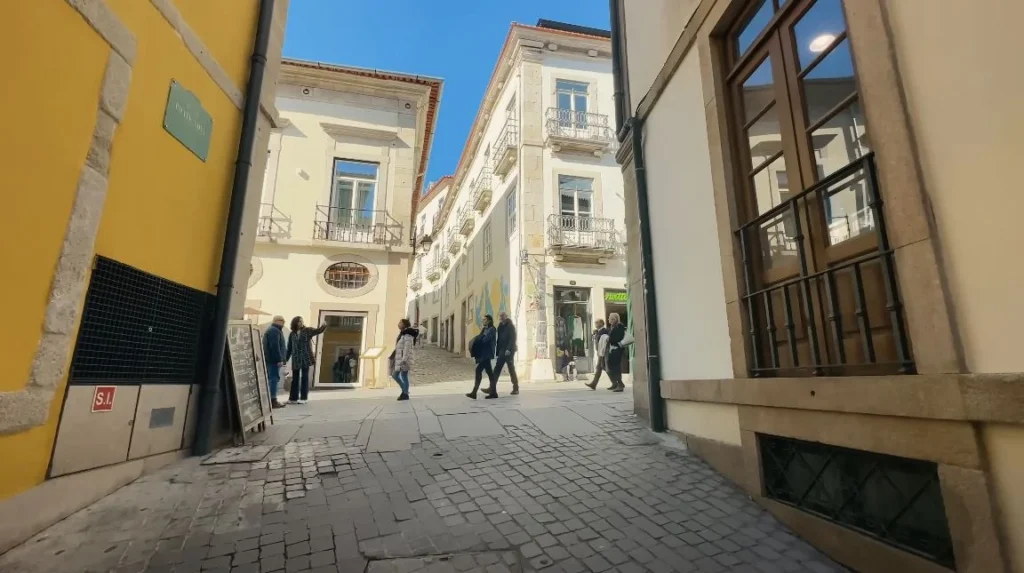
That yellow building on the left? That’s Instagram Porto. Renovated in 2018, now houses a vegan brunch place that serves €18 avocado toast. The stairs in the middle? Working Porto – been there since 1743, locals use it as a shortcut to avoid tourist crowds. The shadowy bit on the right where you can’t quite see what’s happening? Shadow Porto. We’ll get there.
The Francesinha Conspiracy and Other Food Lies
The Sandwich That Shouldn’t Exist
Everyone tells you to try francesinha. “It’s Porto’s signature dish!” they scream. What they don’t tell you is that it’s basically a dare that got out of hand.
1953, some guy named Daniel Silva returns from France, decides to “improve” the croque-monsieur by adding:
- Linguiça (Portuguese sausage)
- Fresh sausage
- Ham
- Cold cuts
- Steak
- Melted cheese
- Beer sauce
- A fried egg on top
- French fries for “vegetables”

I watched a cardiologist eat one at Bufete Fase. He saw me staring. “Once a month,” he said in perfect English, “or I die either way.” The sauce has beer, tomato, whiskey and about seventeen other things nobody agrees on. Every restaurant guards their recipe like nuclear codes.
The Actual Food Hierarchy
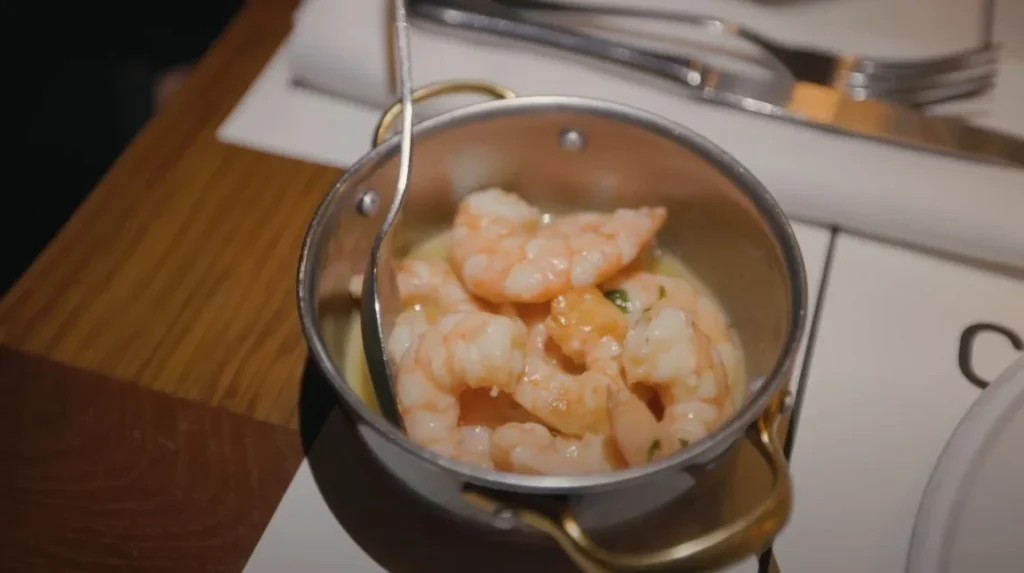
But here’s what locals actually eat. That shrimp situation in the copper pot? Gambas al ajillo at O Gaveto. 4 PM on a Tuesday, place was packed with men in suits who definitely should’ve been at work. €23 but you get approximately 47 shrimps swimming in garlic butter that could resurrect the dead.

That beef on the slate? Pica-pau at Taberna dos Mercadores. Literally translates to “woodpecker.” It’s beef cubes in beer sauce with pickles that costs €7 and makes you question why you ever ate anything else. The owner, Senhora Rosa, hasn’t changed the recipe since 1987. Hasn’t changed the prices much either.

This octopus swimming in olive oil? This is what Porto actually tastes like. Not the francesinha. This. Polvo à lagareiro. The octopus gets beaten against rocks (supposedly makes it tender, actually just tradition), grilled until the tentacles curl into perfect spirals, then drowned in olive oil that costs more than wine.
Real Porto Food Price Reality Check
| What Tourists Eat | Price | What Locals Eat | Price | Calorie Difference | Happiness Index |
| Francesinha at Majestic Café | €19 | Bifana at O Conga | €2.50 | +2000 | Same |
| Cod at Ribeira restaurant | €28 | Bacalhau at tasca near Campanhã | €8 | -200 | +300% |
| Port tasting at Cálem | €15 | Bottle from corner store | €4 | +2000% | Depends on company |
| Pastéis de nata at Manteigaria | €1.20 | Same pastry at A Padaria Ribeiro | €0.65 | 0 | Identical |
Livraria Lello and the Harry Potter Industrial Complex

Let’s address the elephant in the baroque room.
Livraria Lello. “The most beautiful bookstore in the world.” “JK Rowling’s inspiration for Hogwarts.” €6 entry fee that you can supposedly discount from a book purchase but good luck finding a book under €25.
Here’s the thing – it IS beautiful. Criminally beautiful. That neo-Gothic facade, the red staircase that looks like it’s flowing, the stained glass ceiling that makes everything look blessed. But…
JK Rowling lived in Porto from 1991-1993. Livraria Lello has been claiming she wrote Harry Potter there. She’s literally said she never wrote there. The bookstore doesn’t care. They’ve built an entire economy on this lie.
The day I visited:
- 9 AM: Line of 200 people
- 9:15 AM: Store opens, chaos
- 9:16 AM: First Instagram photoshoot blocking the stairs
- 9:45 AM: Security guard visibly considering career change
- 10 AM: I leave, having touched zero books
An employee (won’t name him, he needs his job) told me they sell 3,000 tickets daily in summer. €18,000. Daily. For a bookstore where nobody buys books.
The Harry Potter Lie Economy

The Bridge Psychology Experiment
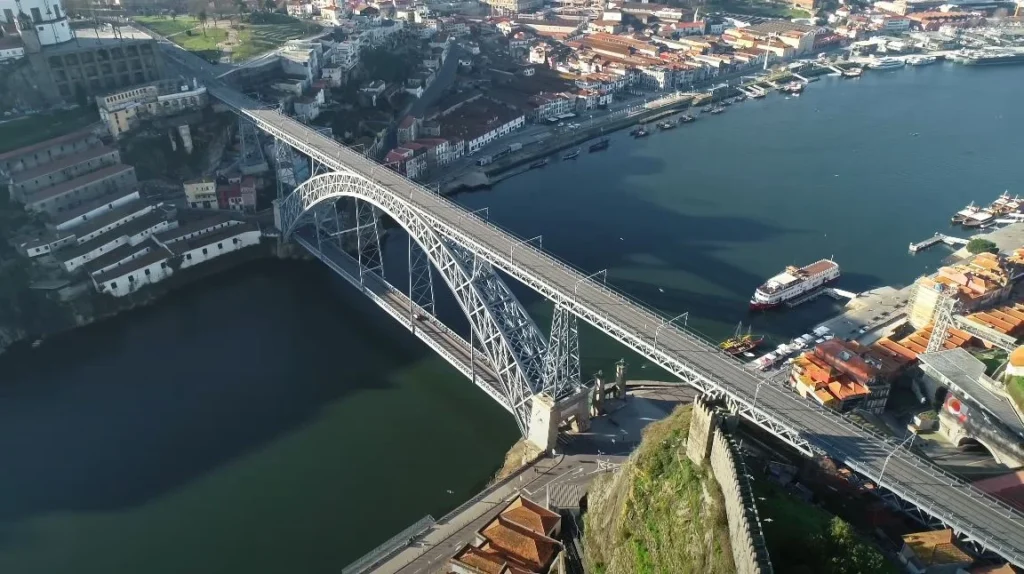
Dom Luís I Bridge. Designed by Théophile Seyrig (Eiffel’s student who probably should’ve gotten more credit). Two levels, six types of people:
Upper Level (Pedestrians + Metro)
- Tourists doing the lean – That terrifying lean over the edge for the perfect shot. Natural selection in real-time.
- Locals speed-walking – Using tourists as human slalom poles
- Vendors – Selling locks for “love” that the city cuts off monthly
- Jumpers – Not talking about BASE jumping
Lower Level (Cars + Pedestrians)
- Lost tourists – Who didn’t realize there were two levels
- Fishermen – Who haven’t caught anything since 1987 but keep coming
The bridge sways. Nobody mentions this. It’s designed to, but when you’re 45 meters up and feeling it move, your lizard brain doesn’t care about engineering.
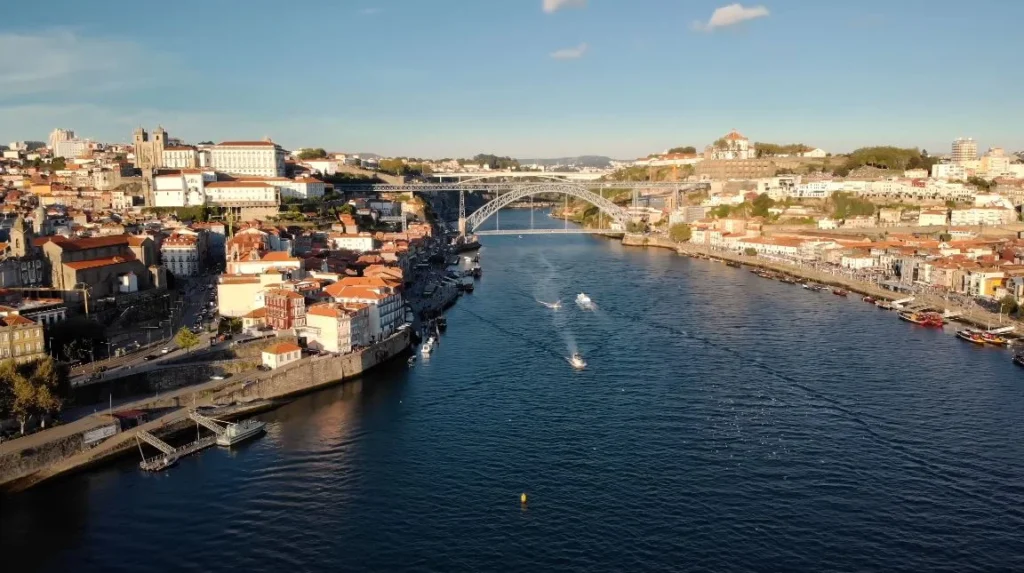
From up here, Porto looks manageable. Contained. It’s lying to you. Those pretty buildings hide 74-degree inclines that’ll murder your calves. That peaceful river? It’s killed more people than all of Portugal’s wars combined. The city uses beauty as camouflage for it’s hostility toward human locomotion.
A Monument to Missing Your Train

Stayed at one of those boutique hotels that’s trying so hard to be subtle luxury it comes full circle to being ostentatious. Mirrors on mirrors on mirrors. A TV that rises from the foot of the bed like Dracula’s coffin. The kind of place where they fold the toilet paper into a point and you feel guilty for pooping.


This courtyard-lounge situation is peak “we converted a palace and want you to know it.” That salmon wall color? “Pombaline Pink” – named after the Marquis of Pombal who rebuilt Lisbon after the 1755 earthquake. Porto uses it to remind Lisbon they didn’t need rebuilding. The rivalry is that petty and that old.
Porto Accommodation Truth Table
| Type | Cost/Night | What You’re Really Paying For | Actual Sleep Quality | Breakfast Tragedy Level |
| Ribeira Boutique Hotel | €150-300 | Instagram backdrops | 3/10 (drunk tourists) | Continental sadness |
| Cedofeita Airbnb | €60-90 | “Authentic” experience | 7/10 | DIY disaster |
| Campanhã Hostel | €15-25 | Bedbugs with backstories | 2/10 | Stale bread, tears |
| Business Hotel in Boavista | €70-100 | Functioning AC | 8/10 | Acceptable mediocrity |
| Someone’s Grandma’s Spare Room | €30 | Stories, port, judgment | 9/10 | Enough food to kill you |
The Port Wine Mafia Nobody Admits Exists
Vila Nova de Gaia: The Other Side’s Monopoly
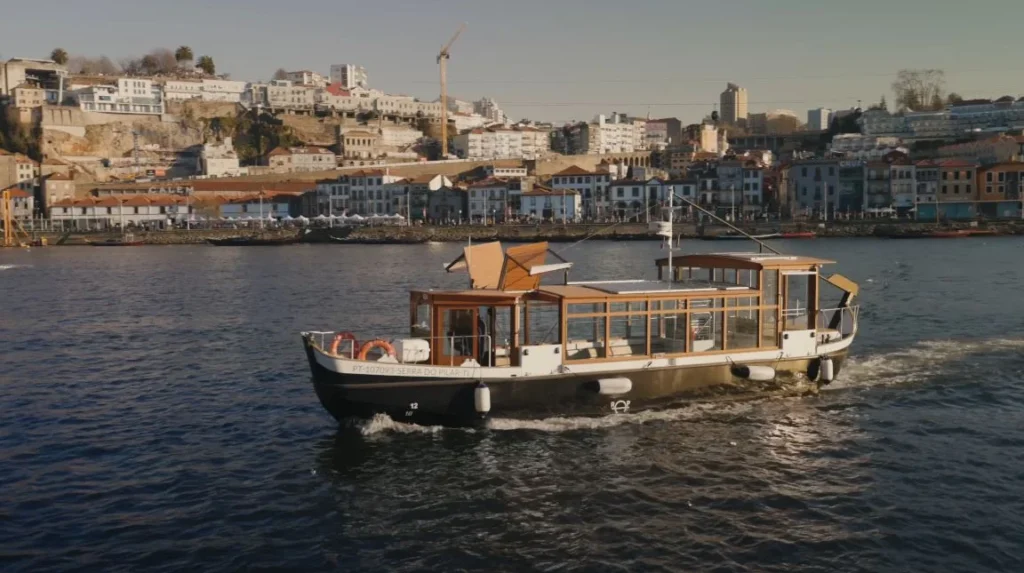
See that boat? It’s decorative. Has been since 1987. The last real rabelo boat carrying port barrels down the Douro crashed in 1961. But every port house keeps one floating there because tourists expect it. The entire port wine industry is theater and Vila Nova de Gaia is the stage.
Here’s what they don’t tell you on those cellar tours: Port wine isn’t even from Porto. It’s from the Douro Valley, 100km east. Porto just had better marketing and a river that reaches the Atlantic. The wine has to age in Vila Nova de Gaia (the south bank) because of a 1926 law that basically created a geographic monopoly.
The big houses – Taylor’s, Graham’s, Sandeman – they’re all British. Have been since the Methuen Treaty of 1703 when Portugal traded wine rights for textile imports. Portugal makes the wine, Britain owns the profits. It’s colonialism with a nice finish and hints of dark chocolate.
The Port Tasting Scam Hierarchy
| Location | What You Pay | What You Get | Alcohol Content | Chance of Authenticity | Hangover Intensity |
| Cálem Cellars | €12-20 | 3 thimbles + sales pitch | 19-20% | It’s real but young | 4/10 |
| Taylor’s Terrace | €25-95 | View + 5 pours + cheese | 20% | Legitimate vintage | 6/10 |
| Random Ribeira “Cellar” | €5 | Mystery liquid | 8-40% | Absolutely not | 11/10 |
| Corner store bottle | €3.50 | Full bottle of Croft | 19% | Real as it gets | Manageable |
| Someone’s uncle’s garage | €0 | Homemade “port” | Unknown | It’s something | Potential blindness |

The British Cemetery Plot Twist
Casa da Companhia. Looks innocent enough, right? Wrong. This building hides one of Porto’s weirdest secrets – it’s owned by the British Port Wine Association, established 1814. Still meets monthly. Still controls approximately 60% of port exports.
I tried to attend a meeting. The secretary, a Portuguese woman who’d clearly dealt with curious idiots before, just said “Members only” in an accent so British it could colonize India again. The membership list? Fourteen families. Same fourteen since 1850.
Neighborhood Personality Disorders
A Psychiatric Evaluation of Porto’s Districts
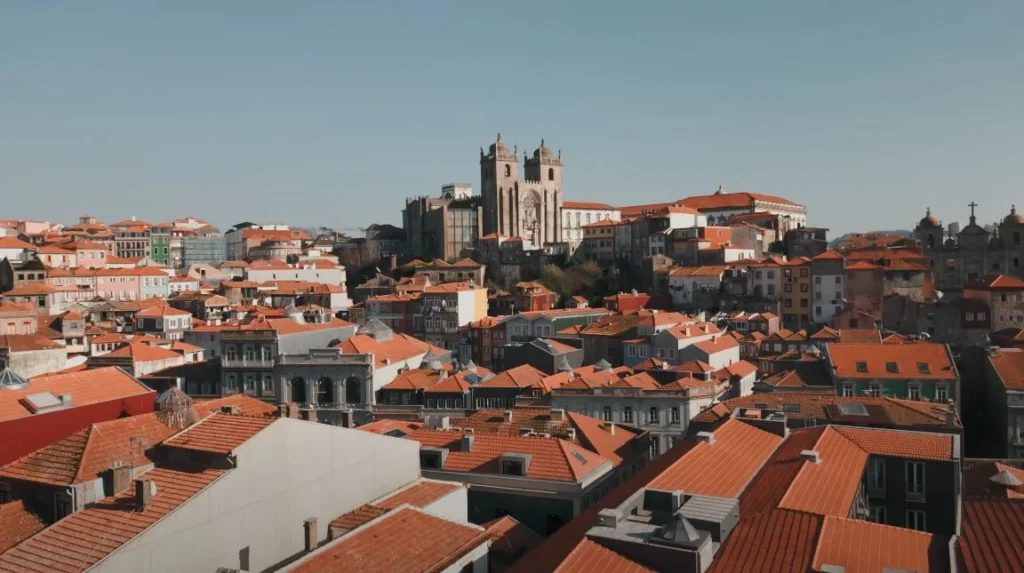
Looking at Porto from above, you’d think it’s organized. It’s not. Each neighborhood has developed it’s own specific mental illness and they’re all in group therapy called “urban planning” that isn’t working.
Ribeira – Narcissistic Personality Disorder
- Symptoms: Constant need for tourist attention, inflated self-importance.
- Puts on makeup (lights) every night.
- Charges €5 for a beer.
- Thinks it IS Porto.
Cedofeita – Hipster Anxiety Complex
- Every building is either a contemporary art gallery or vintage clothing store.
- Baristas with philosophy degrees.
- Rent increased 400% since 2015.
- Constantly worried it’s becoming too mainstream.
Campanhã – Forgotten Child Syndrome
- Has the main train station but nobody stays.
- Cheapest rent, highest crime.
- Amazing Tamil restaurants nobody knows about.
- Porto pretends it doesn’t exist.
Foz do Douro – Rich Kid Depression
- Has everything, enjoys nothing.
- Atlantic ocean views, empty mansions.
- Golf courses and existential dread.
- Therapy sessions cost more than most people’s rent.
Boavista – Corporate Sociopathy
- Glass buildings with no soul.
- Shopping mall the size of an airport.
- Only emotion is quarterly earnings.
- Roundabout so complex it has it’s own Wikipedia page.
The Gentrification Speed Index
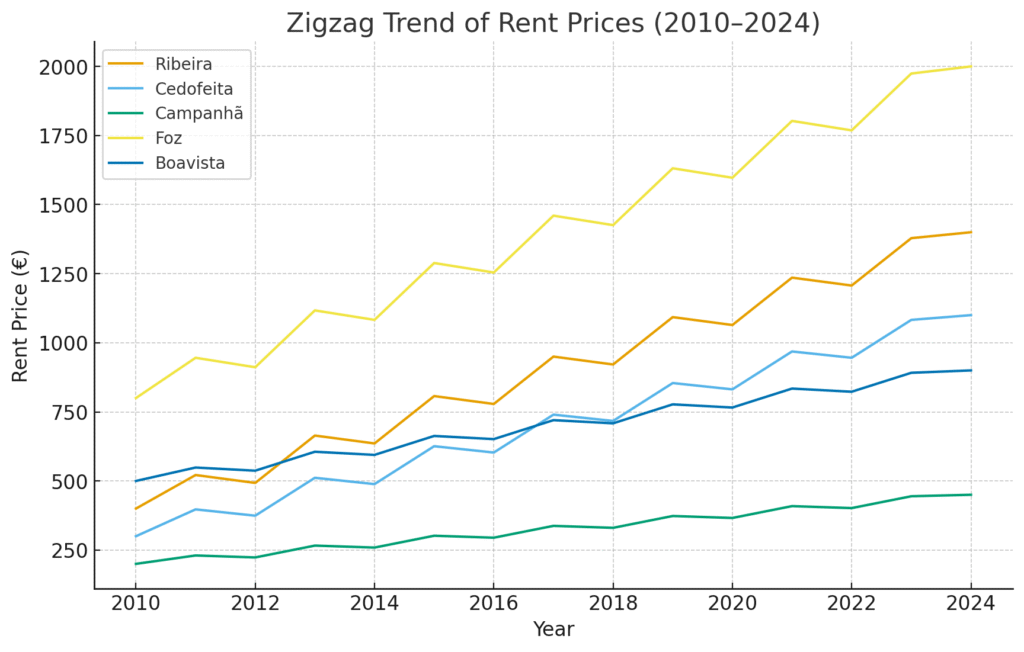
São Bento Station – A Monument to Missing Your Train

São Bento Station. 20,000 azulejo tiles depicting Portuguese history. Completed in 1916. Absolutely gorgeous. Completely dysfunctional.
The tiles show battles, royalty and peasants working fields. What they should show is tourists blocking the platforms trying to photograph said tiles while locals miss their trains. I watched a businessman in a €2000 suit literally hurdle a family of six posing for Instagram. He still missed the 17:42 to Braga.
The station was built on the site of a 16th-century Benedictine monastery. The monks left because they couldn’t handle the noise. In 1536. Before trains existed. They knew something.
São Bento Station Statistics (My Personal Count)
- Tiles: 20,000 (official)
- Daily tourists photographing tiles: 8,000
- Actual trains caught: 12%
- Minutes spent finding platform 3B: 27
- Elderly ladies who will elbow you for the last seat: All of them
- Functional ticket machines: 0.5 (one works sometimes)
- Price difference between station café and outside: 280%
The Church Conspiracy

Porto has 37 churches in the historic center alone. That’s one church per 2,000 residents. Either medieval Porto was incredibly sinful or incredibly bored.
Igreja dos Clérigos (the one with the tower everyone climbs) charges €6 to climb 225 steps. The church next door, Igreja do Carmo, is free but covered in 1912 azulejo tiles showing the founding of the Carmelite order. Nobody goes there. The third church, Igreja das Carmelitas, is literally attached to Carmo but they’re different churches because of a 17th-century property dispute between monks.
There’s a house between them. One meter wide. Built specifically so the two churches wouldn’t touch because the Carmelite monks and the Carmelitas monks couldn’t agree on anything except that they hated each other. Portuguese spite architecture at it’s finest.
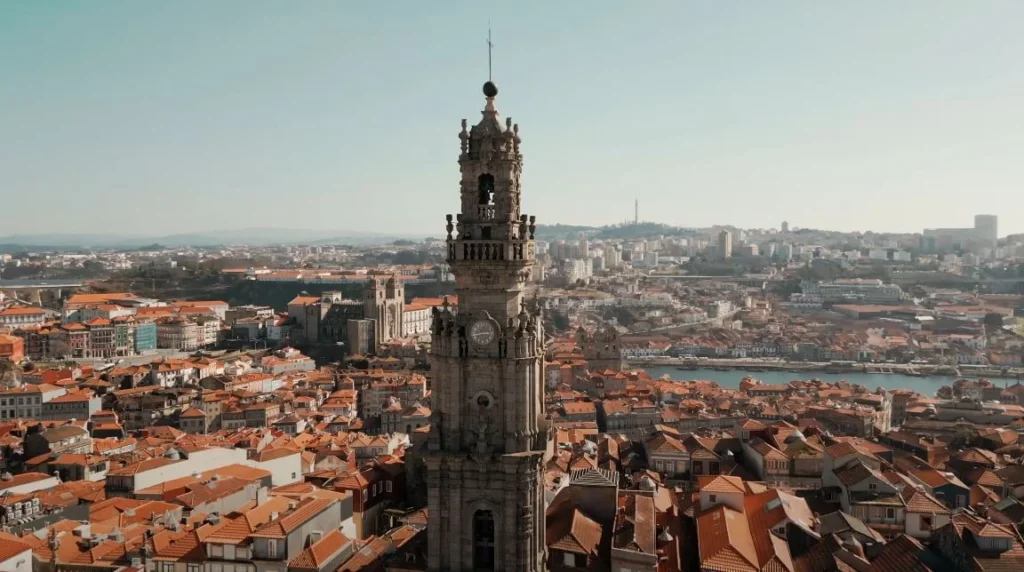
Torre dos Clérigos from above. See those tourists on top? Each paid €6 to realize Porto looks exactly the same from up there as it does from every other viewpoint, just sweatier.
Church Economics in Porto
| Church | Entry Fee | What You See | Queue Time | Spiritual Enlightenment | Better Alternative |
| Clérigos Tower | €6 | Porto from above | 45 min | Zero | Any miradouro, free |
| São Francisco | €10 | Gold everything | 30 min | Guilt about wealth | Outside is free |
| Cathedral (Sé) | €3 | Gothic gloom | 15 min | Medieval depression | The cloisters, actually worth it |
| Carmo/Carmelitas | Free | Azulejos, spite | None | Confusion | This one, actually |
| Random parish church | Free | Locals praying | None | Actual faith | Also this |
The Metro Map Lie
Porto’s metro map is fiction. Beautiful, colored fiction.
It shows six lines in perfect geometric harmony. Reality: Three lines that work, two that exist sometimes and one (the pink line) that’s been “opening next year” since 2008.
The metro was built for Euro 2004 (football championship). They dug up the entire city, found Roman ruins, medieval walls and seventeen types of archaeological “problems.” Solution? Build around them. Now Line D does a loop that defies physics because they found a Roman bath and couldn’t move it.
Metro Reality Decoder
| What Map Shows | Actual Reality | Time Difference | Tourist Confusion Level |
| Trindade: Central hub | Labyrinth designed by Minotaur | +15 min to transfer | Extreme |
| Airport connection | Exists but requires faith | Listed: 32 min, Actual: 45-∞ | Panic-inducing |
| Beach access (Line A) | Technically true | 47 min to cold Atlantic | Disappointing |
| “Frequent service” | Every 8 min (or 30) | Depends on universe’s mood | Rage |
| Zone system | Quantum physics | Z2? Z3? Z2+1? | Existential crisis |
The Pastel de Nata Situation
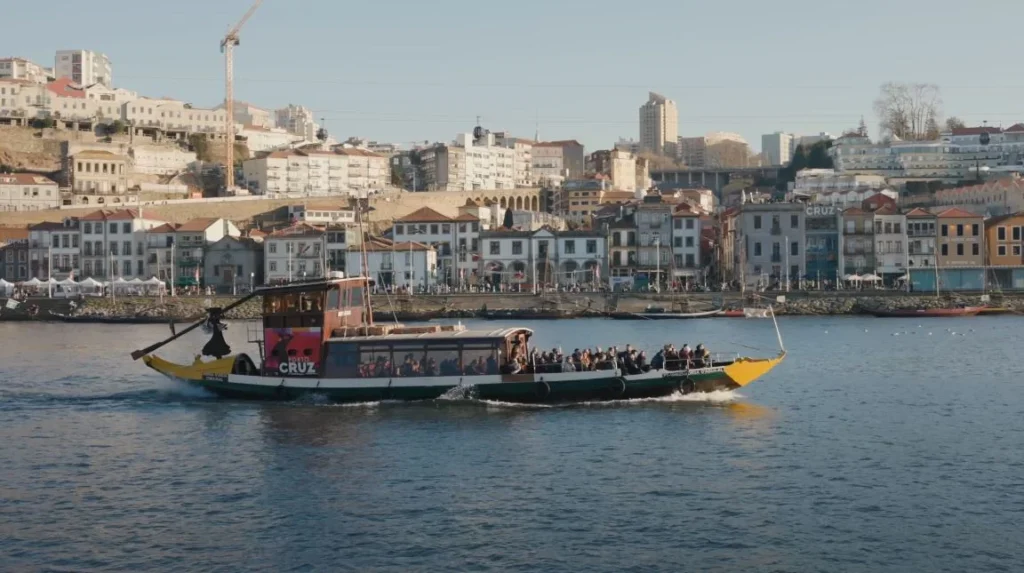
Everyone loses their mind over pastéis de nata in Lisbon. “You must try the ones from Belém!” No. Porto’s are better and I’ll die on this hill.
Manteigaria gets the Instagram crowd. Lines around the block. €1.20 per tart. They’re good but they know they’re good, which ruins it somehow.
Confeitaria do Bolhão, near the market. €0.70. Same pastry. Old ladies buying dozens. The baker, Senhor Armindo, has been making them since 1974. Same oven. Same recipe. Same price adjusted for inflation. He doesn’t speak English and doesn’t care about your food blog.
But here’s the secret – Padaria Ribeiro on Rua do Almada. They make 200 every morning at 6 AM. By 10 AM, gone. €0.65. The custard is still warm at 7 AM. The old men reading newspapers don’t even look up when tourists wander in, confused by the lack of English menus. That’s how you know it’s real.
The River Taxi Psychology and Other Water-Based Scams

Those six bridges crossing the Douro? Each one represents a different era of Portuguese denial that boats exist. But the river taxis – now that’s where Porto shows it’s true capitalist colors.
€2.50 to cross a river you could walk across (via bridge) in 12 minutes. But walking means climbing either 112 steps up or 147 steps down, depending on which side screwed you. So you pay. Every local has done the math:
Knee cartilage preservation > €2.50
The boats run every 30 minutes. Unless it’s windy (often). Or lunch time (12-2 PM). Or the captain’s cousin is getting married (surprisingly frequent). I waited 47 minutes once watching the boat bob 10 meters from the dock while the captain finished his cigarette. Power move.
Water Transport Reality Matrix
| Option | Cost | Duration | Likelihood of Occurring | Wetness Risk | Instagram Points |
| River taxi | €2.50 | 5 min + 30 min wait | 60% | Low | 3/10 |
| Tourist cruise | €15-50 | 50 min | 100% (they want money) | Zero | 7/10 (golden hour only) |
| Swimming | Free | 8 min | Don’t | 100% + hypothermia | Either 0 or viral |
| Walking bridge | Free | 12-15 min | 100% | Rain dependent | 5/10 |
| Uber around | €12 | 20 min | 100% | Zero | -3/10 (coward) |
Seasonal Porto – The City’s Multiple Personality Calendar
The Four Portos Through The Year
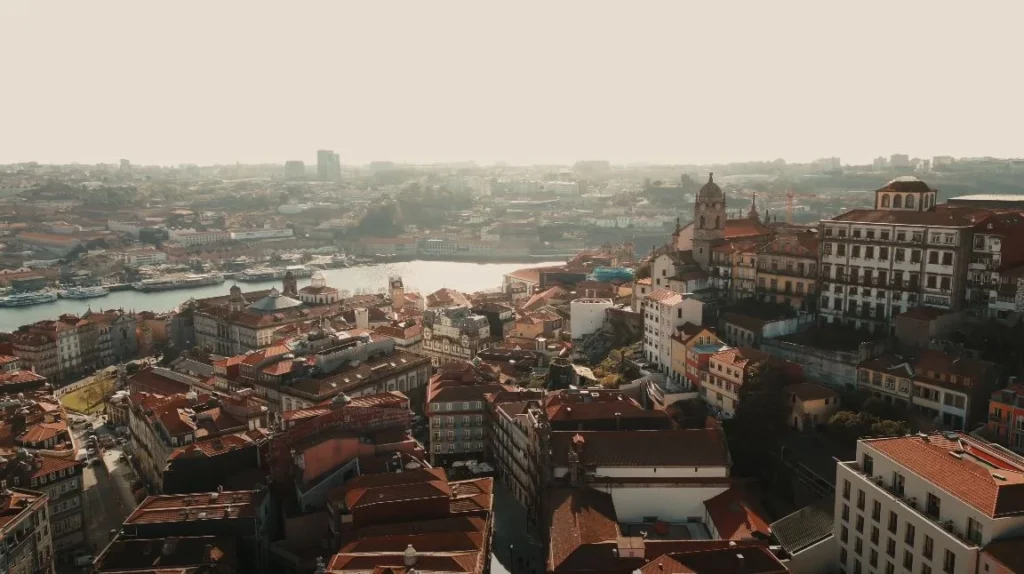
This golden hour shot? That happens maybe 47 days a year. The rest? Porto is fifty shades of gray and not the fun kind.
January-March: Submarine Porto
- 237mm of rain per month
- Umbrellas last 3 days average
- Locals develop gills
- Tourists question life choices
- Temperature: 8°C but feels like drowning
April-May: Bipolar Porto
- Sun! Rain! Sun! Hail? Sun!
- Four seasons per day
- Dressing requires prophecy
- Allergies to things you didn’t know existed
- Everyone pretends it’s summer (it’s not)
June-August: Invasion Porto
- 4.7 million tourists
- Locals flee to Minho
- Francesinha prices double
- Every photo has 47 strangers
- Beach temperature: Still freezing
September-November: Secret Porto
- The sweet spot nobody knows
- Tourists gone, weather holds
- Prices drop 40%
- Locals emerge from hiding
- Can actually eat at good restaurants
December: Denial Porto
- Christmas lights on wet everything
- Cod consumption increases 400%
- Port wine becomes medicine
- Everyone pretends they like the rain
- It’s “cozy” (it’s not)
The Train to Anywhere But Here
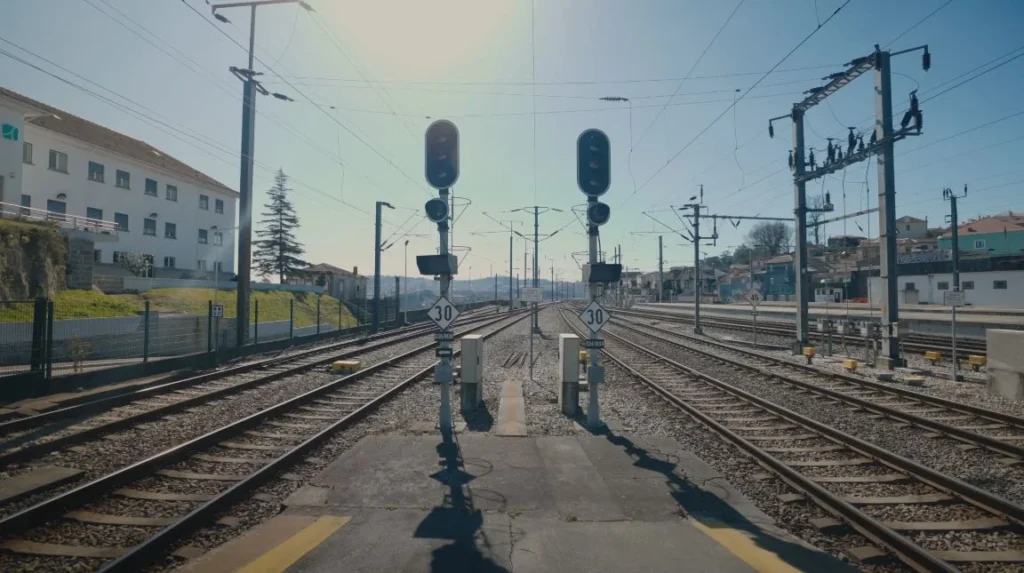
Campanhã Station is where Porto admits defeat. It’s not trying to be beautiful. Those “DEMAIS É DEMAIS” sale signs? Been there since 2003. It’s the station you use when you’ve given up on Porto’s charm and just want to leave.
But here’s the thing – it works. Trains actually depart on time. Tickets cost what they say. No tourists photographing tiles while you’re trying to catch the 14:30 to Coimbra.
Escape Routes from Porto
| Destination | Duration | Cost | Why You’re Really Going | Likelihood of Return | Regret Level |
| Douro Valley | 2 hours | €12 | Wine without walking | High (same day) | None |
| Braga | 1 hour | €7 | Religious guilt | High | Low |
| Guimarães | 1.5 hours | €7 | “Birthplace of Portugal” | High | Medieval |
| Lisbon | 3 hours | €25-45 | Grass is greener syndrome | Medium | Immediate |
| Spain (Vigo) | 2.5 hours | €18 | Tapas are cheaper | Low | Never |
| Airport | 32 min-∞ | €2.50 | Freedom | Very low | Depends on destination |
The Apartment Crisis Nobody Mentions
The Airbnb Apocalypse
In 2010, Porto city center had 40,000 residents. In 2024? 18,000. The other 22,000 apartments? Airbnb.
I met Maria, 74, born in Ribeira. Her family’s been there 200 years. Her landlord just served eviction notice. The apartment will become “Porto River Charm – Perfect Location!” for €150/night. Maria’s pension is €380/month.
But here’s the twist – Porto needs tourist money. 23% of GDP. Without it, the city dies. With it, the city dies differently.
The Truth About Portuguese Hospitality
Everyone says Portuguese people are “so friendly.” They’re not. They’re polite. There’s a difference.
Friendly means wanting to be your friend. Polite means tolerating your existence while secretly hoping you’ll leave. Porto perfected this. They’ll give you directions, recommend restaurants, smile constantly. But try to actually befriend them? Wall.
It takes approximately 3 years of living in Porto before locals stop treating you as temporary. 5 years before they’ll invite you for dinner. 10 years before they’ll tell you what they really think about anything.
An old man at O Conga (bifana place, you need to go) explained: “We’ve been invaded by everyone – Romans, Moors, Spanish, French, British tourists. We learned to smile and wait for you to leave. Usually works.”
The Cost of Falling for Porto
The Real Numbers (7 Days, February, One Person)
| Category | Instagram Porto | Working Porto | Shadow Porto | My Actual Spending |
| Accommodation | €150/night x 7 = €1050 | €40/night = €280 | Someone’s couch = €0 | €490 (mixed) |
| Food | €50/day = €350 | €15/day = €105 | €8/day = €56 | €180 |
| Transport | Ubers = €150 | Metro = €20 | Walking = €0 | €35 |
| Activities | €200 | €20 | €0 | €75 |
| Wine | €200 | €50 | €200 | €127 |
| Total | €1,950 | €475 | €256 | €907 |
What €907 Actually Bought:
- 3 incredible meals
- 17 mediocre ones
- 47 pastéis de nata (no regrets)
- 4 bridge crossings I could’ve walked
- 237 photos of tiles
- 1 sunburn (February, somehow)
- 3 near-death experiences on hills
- 1 existential crisis in Livraria Lello
- 8 bottles of port (only opened 3)
- Infinite judgment from locals
The Conclusion: Porto’s Ultimate Truth
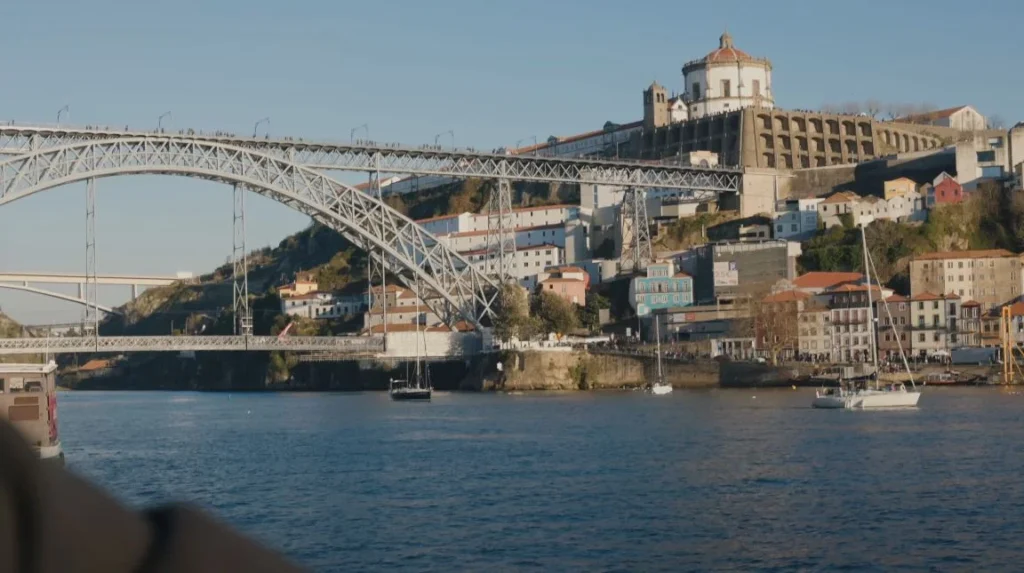
Porto isn’t beautiful. Not really. It’s decay painted pretty colors. It’s sadness with good light. It’s a city that peaked in the 1400s and has been coasting on reputation since.
But.
At 7:23 AM, when the sun hits those tiles just right and the tourists are still sleeping and the old ladies are hanging laundry between buildings that shouldn’t still be standing, something happens. The city forgives you for existing. For exactly 17 minutes.
Then someone tries to sell you a €6 magnet of a tram that doesn’t run anymore and the spell breaks.
Would I go back?
I already have. Three times. Each time swearing it’s the last. Each time finding one more tasca that serves €7 meals that would cost €70 in Paris. One more viewpoint that isn’t on Instagram yet. One more old man willing to explain why Porto is better than Lisbon while pouring you wine that costs less than water.
Porto doesn’t want you to love it. It wants you to leave, leave money and tell others to come leave money too. It’s the most honest transactional relationship you’ll have with a city.
And somehow, that’s exactly what makes you fall for it.

